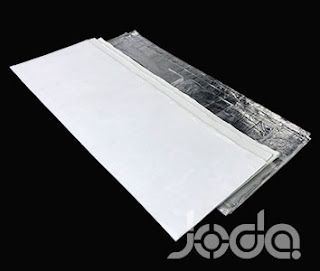Feathers from the underground ocean
The earth is probably the only planet in the solar system that shows moisture. But astronomers believe that quite a lot of planets contain the entire ocean under the surface, which remains liquid due to the heat generated by gravity and radioactive decay. Potential candidates include Jupiter's largest moon Ganymede; Ceres, the largest object in the asteroid belt; and even Pluto, at the far end of the solar system.
However, there are only two cases. Astronomers have direct evidence that these hidden oceans exist in the form of water column coming out of the surface, and only one of these cases is conclusive. In 2013, the Harbert Space Telescope discovered the plumes of Jupiter's icy Jupiter, Europa, but never appeared since then. By contrast, Saturn's icy two - guard two appears to have produced more normal plumes, one of which was Cassini's actual flying spacecraft in 2015.
Cassini used his airborne mass spectrometer to confirm that plumes are water and contain simple carbon based molecules such as methane, which provides support for the view that life may exist on the surface of earth two. Testing this possibility will require other spacecraft in flight to detect molecules that are closely related to life, such as the amino acid plumes, through the analytical equipment.
Silica aerogel blanket
NASA's Jet Propulsion Laboratory (JPL) scientists Peter Willis (Peter Willis) in Pasadena city of California led by Jet Propulsion Laboratory (JPL) have developed a microchip electrophoresis device for amino acid recognition on the alien planet. This means that they only need one way to capture the amino acids in the feathers and then transfer the amino acids to the electrophoretic device.
In order to capture amino acids in plumes at high speed, we can prove a super light material called silica aerogel, in which the liquid component of silica gel is replaced by gas, which may be ideal. Silica aerogel insulation have been formed in this field, because NASA's spacecraft Stardust uses one to collect organic molecules from the wild comet 2. However, in this mission, aerogels are returned to the earth, and then extract molecules from aerogels for analysis. In this case, extraction will need to be carried out in the depths of the space.
So any such extraction needs a considerable foundation, so Willis and his team decided to use some solvent to simply remove amino acids from silica aerogels. They injected 10 different amino acids into silica gel samples at set concentrations, and then tried to wash with different solvents (including water and sodium hydroxide and other organic solvents, methanol and acetonitrile). Among them, aromatic, acid, alkaline, polar and non-polar 10 amino acids from five main groups were observed. Whether their different chemical properties will affect the extraction.
Convenient water
They found that some solvents were trying to extract alkaline amino acids, with positive charges under certain pH, and therefore adhered to the negatively charged aerogels. However, water has been proved to be effective in extracting all the amino acids of 85-100%. This is a very convenient finding, because water is easy to transport, because it is not corrosive, and is able to cooperate well with microchip electrophoresis system that can isolate and detect all 10 kinds of amino acids.
The problem now is that the silica sell aerogels and microchip electrophoresis device actually found how much time is required before they boarded on Enceladus spacecraft. Encouragingly, the Japanese space agency, the Japan Aerospace Exploration and Development Agency (JAXA), has already provided funds for the mission with the NASA.
However, there are only two cases. Astronomers have direct evidence that these hidden oceans exist in the form of water column coming out of the surface, and only one of these cases is conclusive. In 2013, the Harbert Space Telescope discovered the plumes of Jupiter's icy Jupiter, Europa, but never appeared since then. By contrast, Saturn's icy two - guard two appears to have produced more normal plumes, one of which was Cassini's actual flying spacecraft in 2015.
Cassini used his airborne mass spectrometer to confirm that plumes are water and contain simple carbon based molecules such as methane, which provides support for the view that life may exist on the surface of earth two. Testing this possibility will require other spacecraft in flight to detect molecules that are closely related to life, such as the amino acid plumes, through the analytical equipment.
Silica aerogel blanket
NASA's Jet Propulsion Laboratory (JPL) scientists Peter Willis (Peter Willis) in Pasadena city of California led by Jet Propulsion Laboratory (JPL) have developed a microchip electrophoresis device for amino acid recognition on the alien planet. This means that they only need one way to capture the amino acids in the feathers and then transfer the amino acids to the electrophoretic device.
In order to capture amino acids in plumes at high speed, we can prove a super light material called silica aerogel, in which the liquid component of silica gel is replaced by gas, which may be ideal. Silica aerogel insulation have been formed in this field, because NASA's spacecraft Stardust uses one to collect organic molecules from the wild comet 2. However, in this mission, aerogels are returned to the earth, and then extract molecules from aerogels for analysis. In this case, extraction will need to be carried out in the depths of the space.
So any such extraction needs a considerable foundation, so Willis and his team decided to use some solvent to simply remove amino acids from silica aerogels. They injected 10 different amino acids into silica gel samples at set concentrations, and then tried to wash with different solvents (including water and sodium hydroxide and other organic solvents, methanol and acetonitrile). Among them, aromatic, acid, alkaline, polar and non-polar 10 amino acids from five main groups were observed. Whether their different chemical properties will affect the extraction.
Convenient water
They found that some solvents were trying to extract alkaline amino acids, with positive charges under certain pH, and therefore adhered to the negatively charged aerogels. However, water has been proved to be effective in extracting all the amino acids of 85-100%. This is a very convenient finding, because water is easy to transport, because it is not corrosive, and is able to cooperate well with microchip electrophoresis system that can isolate and detect all 10 kinds of amino acids.
The problem now is that the silica sell aerogels and microchip electrophoresis device actually found how much time is required before they boarded on Enceladus spacecraft. Encouragingly, the Japanese space agency, the Japan Aerospace Exploration and Development Agency (JAXA), has already provided funds for the mission with the NASA.
Tel: +86 (0) 371 5517 8216
Name: ANNA




评论
发表评论